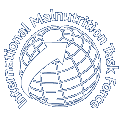In the past it was widely held that all children with severe acute malnutrition should be treated as inpatients in hospital. Recent evidence from emergency situations suggests that:
Many children with severe acute malnutrition can be treated in the community.
 The integrated management of severe acute malnutrition includes both types of treatment: inpatient and community-based. The integrated approach is endorsed in a joint statement by WHO, WFP, SCN and UNICEF.
The integrated management of severe acute malnutrition includes both types of treatment: inpatient and community-based. The integrated approach is endorsed in a joint statement by WHO, WFP, SCN and UNICEF.
Click here to download the Joint Statement
Children with severe acute malnutrition with complications are treated as inpatients in hospital or in a Stabilisation Centre. Children with severe acute malnutrition without complications receive treatment in the community, based at home with frequent visits to a local health centre.
Advantages of the community-based approach:
- Coverage is increased, as many more families can access community-based treatment than hospital-based treatment
- Early detection of cases in the community means that treatment can be started before the onset of life-threatening complications
- Fewer children require hospitalisation, so hospital overcrowding is reduced, which will improve hospital capacity to provide quality treatment
- Fewer families are disrupted by long hospital stays
- Fewer children are exposed to cross-infections in hospital<.li>
- Complicated cases requiring hospital treatment can be discharged earlier for continuing care in the community.
For integrated management to work, it is essential that high quality treatment is provided both in hospitals and in the community and that good linkages exist between the two.
